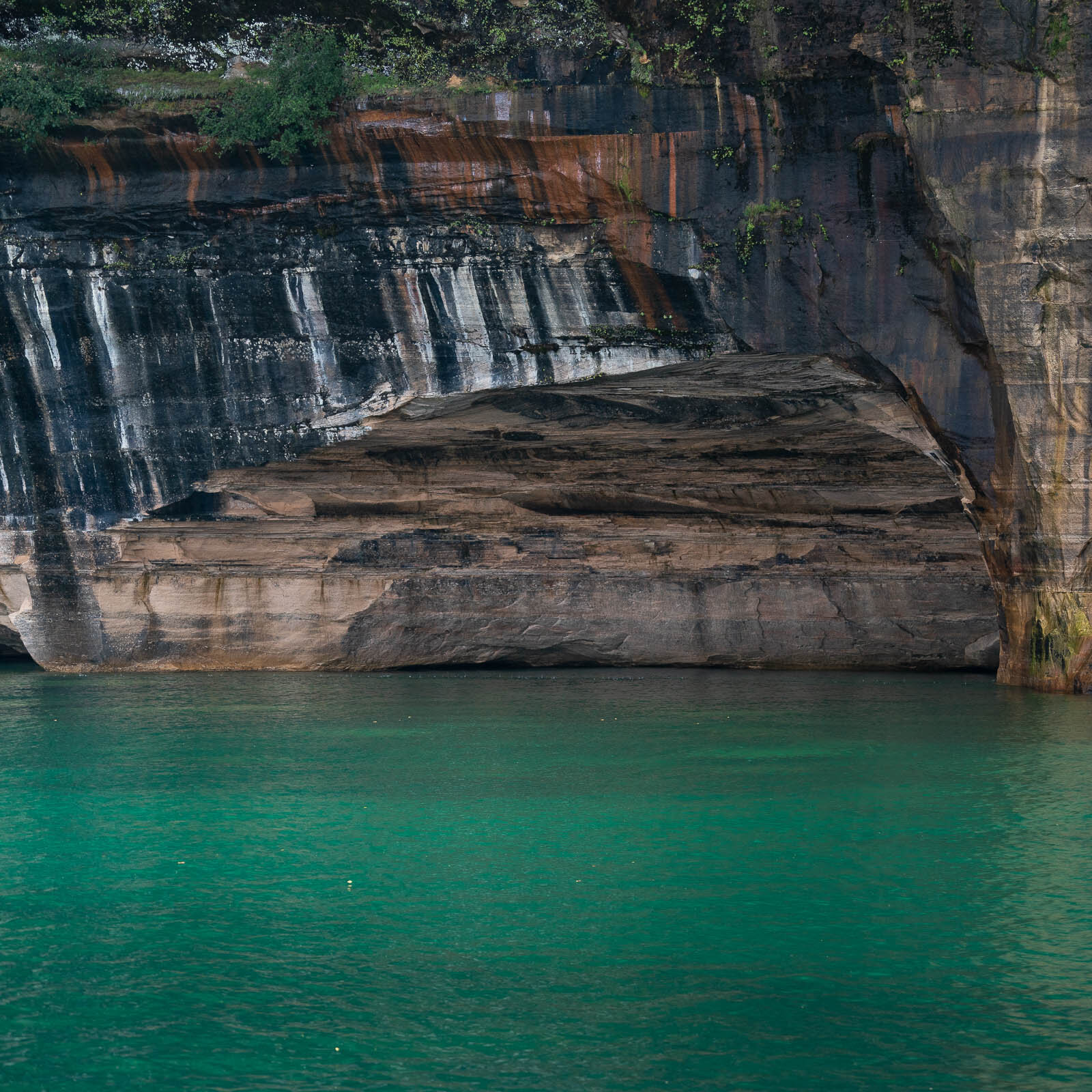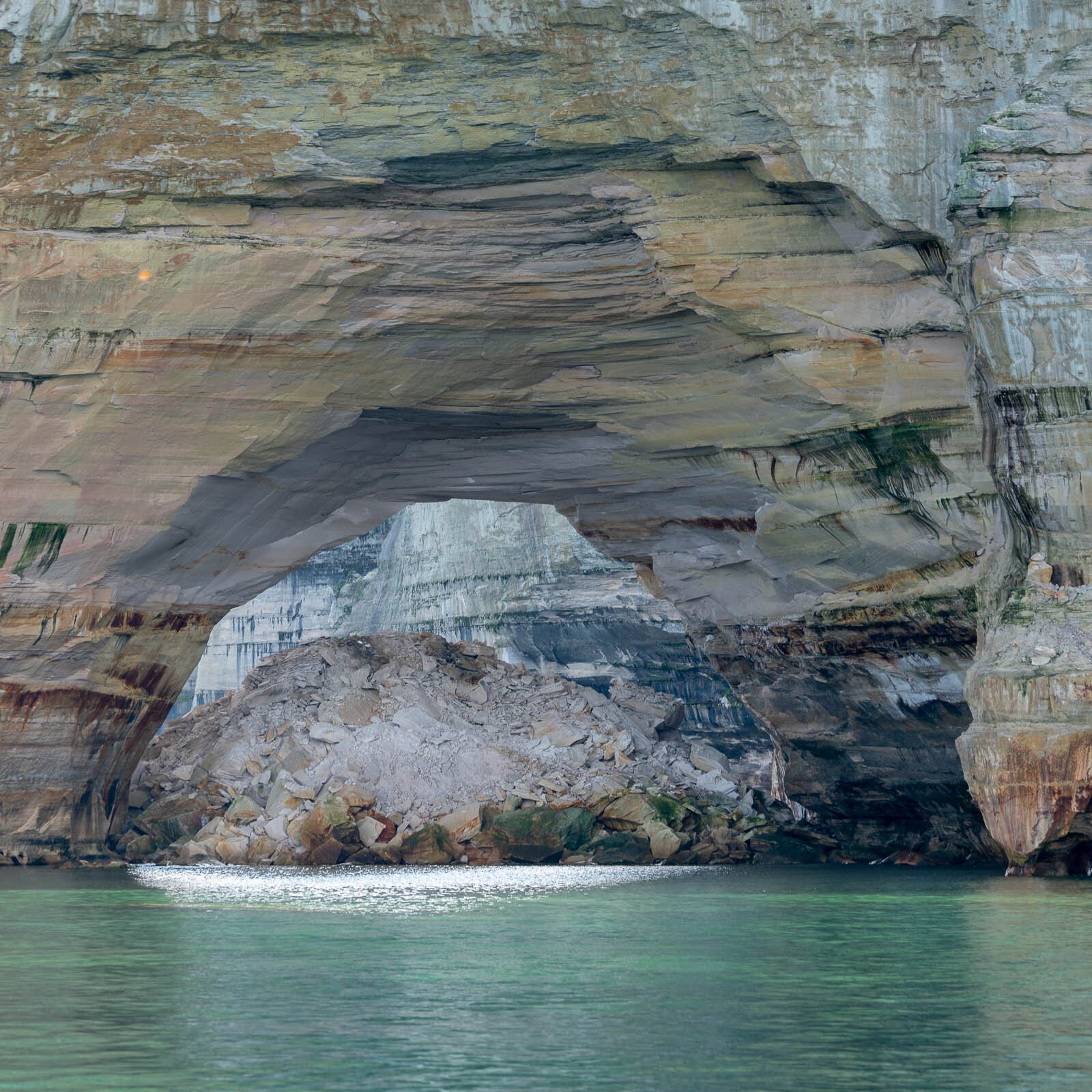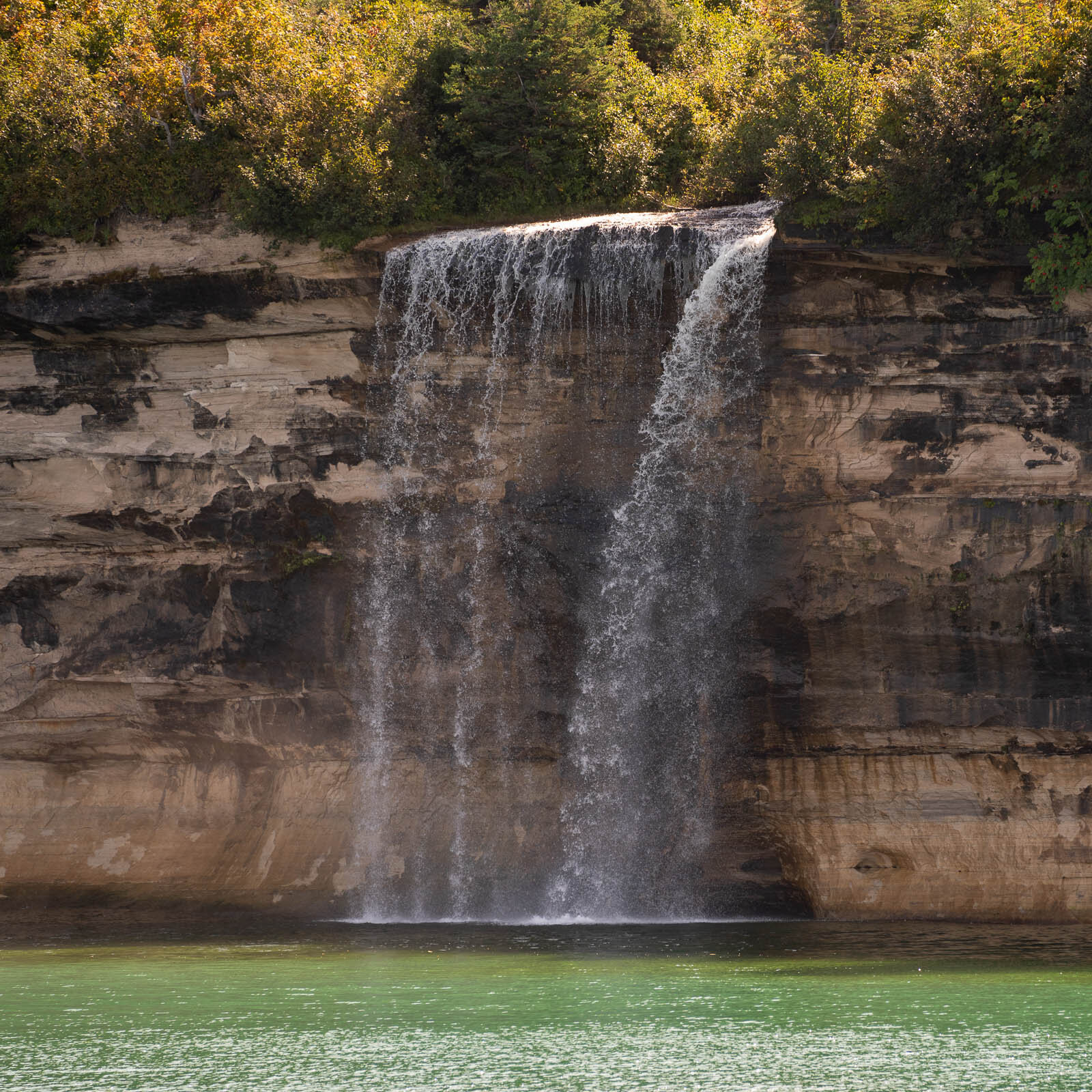Foggy Day at Pictured Rocks National Lakeshore
My cousins, Tom and Jo Lewis, live in Menominee, MI, in the bottom of the Upper Peninsula. We visit every other year or so, and after reading so much about the UP in the novels of the late Jim Harrison (Legends of the Fall, etc.) we really wanted to spend some time exploring. So when we planned a trip for the the Fall of 2019, one thing they said we should do was take a boat tour to see the Pictured Rocks in Lake Superior.
The UP is also known for a variety of waterfalls (more about these to come), so we planned a route to see a few falls before ending up in Munising, MI, where the boats dock. We’d signed up for a morning trip hoping we could make it to Menominee for dinner, but when we got to the harbor there was a dense layer of fog just off shore. There was a chance the tour would be cancelled, but after a short delay we were allowed to board.
As we sailed out of the harbor, our first views of the shore didn’t look too good for photography. And after the twenty minute run to the beginning of the cliffs, things didn’t look much better.
As the boat came closer to the cliffs, our first views of the sandstone formations looked mostly like the photo on the left. It could have been titled, Abstract on a Foggy Day, but it certainly wasn’t what I’d been hoping for. We went along for another couple of minutes before being rewarded. Suddenly the fog was gone, never to return.
The cliff formations that make up the fifteen miles of the Pictured Rocks National Lakeshore range between 50 and 200 feet. They’re composed of 500-million-year-old Cambrian Period sandstone with a younger cap layer of hard sandstone which looks quite different. The multi-colored streaks are from evaporated ground water rich in minerals like iron (red), manganese (black-white), limonite (yellow-brown) and copper (pink-green). Here are a few other snapshots to give you an idea of what the shoreline looks like.
Since my goal was to try to capture some the abstract forms, textures and colors of the cliffs, the quality of the light was important. Part of my good luck was that the fog lifted, but also that most rock faces were fairly bright but without direct sun which would have produced hard shadows and bright highlights as in the middle image above. As you can see in the photo of Munising Falls, the sun was strong while leaving the cliffs themselves in shadow, perfect conditions for capturing images like this.





